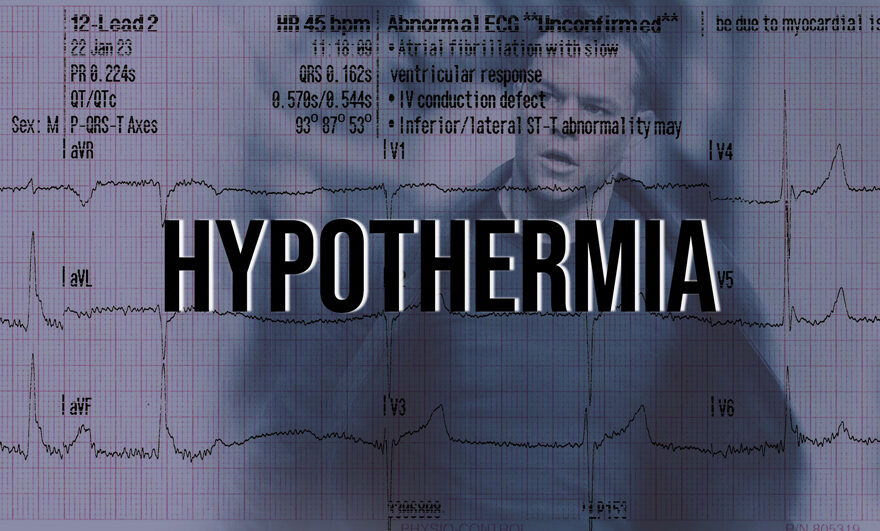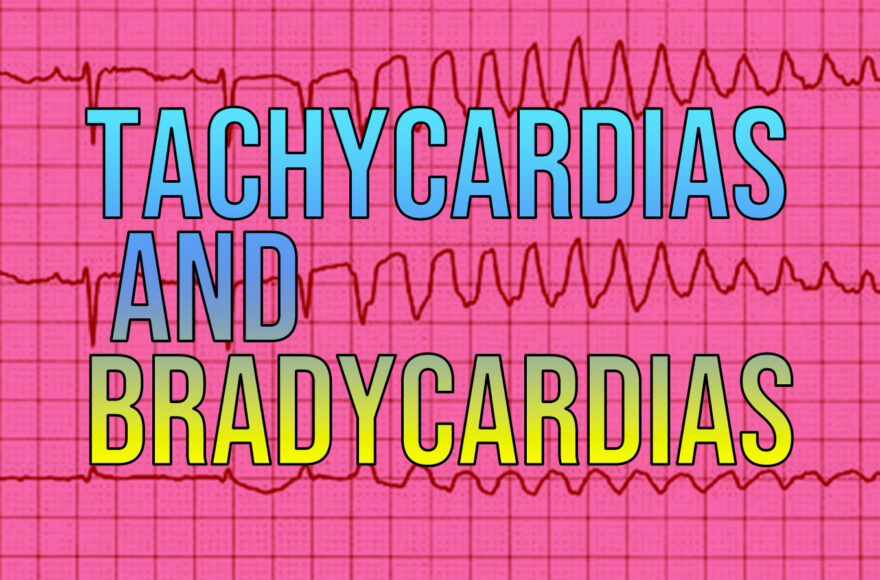Clerking a Cardiac Patient: Part 1

Firstly identifying the 5 key cardiac symptoms:
- Chest pain (part 1)
- Dyspnoea (part 1)
- Palpitations (part 2)
- Odema (ankles, sacral) (part 2)
- Syncope (or near-syncope) (part 2)
1. Chest Pain
Most calls to the ambulance service that end in a cardiac cause start with chest pain. SOCRATES is the standard way to take history but what does each answer tell us?
Additionally if the patient denies pain, asking about ‘discomfort’ or ‘tightening’ could lead you to explore a cardiac cause. The actual pain comes from the myocardial muscle tissue not getting enough oxygen and localised acidosis occurs causing the pain.
Site
Generalised chest pain is more likely to be cardiac than localised.
Hand gestures:
- Clenched fist at centre of chest (Levine’s sign), normally cardiac.
- Open palm on the chest, normally cardiac
- Holding/touching opposite arm, normally cardiac
- Pointing with finger, localised, normally non-cardiac.
Retrosternal pain:
- myocardial ischaemia
- oesophageal inflammation
- costochondritis
- Aortic Dissection
Left Pectoral
- Myocarditis
- Pericarditis
Epigastrum
- Inferior STEMI
- Gastritis
Multifocal or everywhere or localised to chest wall
- Pneumonia or any other respiratoy infection
- Pulomonary embolism (PE). It is worth noting there are more nerve endings peripherally in the lungs and therefore small PE’s tend to be more painful that sub/massive PE’s in the early stages.
Onset
Sudden is probably cardiac, namely a STEMI, PE, Aortic Dissection or Penumothorax.
Gradual + during exertion is probably stable angina.
Gradual + after exertion is probably muscular skeletal.
Gradual over days is probably angina, heart failure or chest infection
Character
Cardiac – myocardial ischaemia.
- Crushing
- Aching
- Tight band around chest
- Dull weight on chest
Cardiac – aortic dissection
- tearing
Non-cardiac / pleuritic / muscular
- localised
- burning
- sharp
Radiating
Cardiac – Myocardial Ischaemia
- Neck
- Jaw
- Shoulders
- Arm (Left normally. The skin over the arm and heart have same nerve pathways).
Cardiac – Aortic Dissection
- Back (the aorta runs down the back of the thoracic cavity)
Non-cardiac
- Left axilla (axiety, pleursy, muscular).
Associated Symptoms
Cardiac
- Adrenaline surge: tachycardia, sweating, nausea, vomiting.
- Acute left ventricular dysfunction: shortness of breath, acute pulmonary odema (APO).
Non-cardiac
- Acidic taste in mouth
- Belching
- Increased salivation
Timing
Can be explored in Onset and is proably just here to make up the pneumonic.
Exacerbating / Relieving factors
Cardiac:
- Exacerbated by cold weather, hard exercise, large meal, stress – angina
- Exacerbated by laying down or inspiration – Pericarditis
- Reduced by leaning forward – Pericarditis
- Reduced by GTN – acute coronary syndrome
- Relieved by rest – stable angina
Non-cardiac
- Fatty, spicy, acidic foods – reflux
- Reduced laying flat – reflux
- Reduced sitting forward – pancreatitis
- Increasing on movement, palpation, coughing – muscular, costachondritis (non-swelling, lower ribs, onset on left), Tietze’s Syndrome (swelling, sternal).
Severity
This has no baring on diagnosis. Patients who are elderly, have diabetes or have had a cardiac transplant will have weaking of peripheral nerve funtion and therefore may have atypical or absent (silent MI) pain.
2. Dyspnoea
Shortness of breath has more differential diagnoses than chest pain. We use the acronym AEROS to explore dyspnoea.
Associated Symptoms
Cardiac
- Chest pain – angina, ACS
- Fatigue – heart failure
- White, frothy sputum – heart failure
- Dry cough – ACE inhibitor side effect
Non-cardiac
- Green, brown, grey sputum – LRTI
- Fever and cough – pneumonia
- Blood in sputum or haemoptysis – PE
- well perfused + tachycardic – hyperventillation syndrome
Exacerbating Factors
Cardiac
- Sudden laying flat (Orthopnoea) – ACS, PE
- Gradual laying flat (Orthopnoea) – heart failure
- Laying flat at night (Paroxysmal nocturnal dyspnoea) – heart failure or COPD, pneumonia
- Exertion
Non-cardiac
- Exposure to pollens
- Diurnal variation – asthma
- Aspirin – asthma
Relieving Factors
Reassurance improves dyspnoea in anxiety – all other causes require interventions.
Onset
Cardiac
- Suddenly – ACS, APO
- Gradually – heart failure
- Intermittent and consides with plapitations – paraoxysmal AF.
Non-cardiac
- gradually – infection,
- Rapid, after immobility, surgery – PE
Severity
Unlike chest pain, this has baring on how severe the underlaying condition is.
For chronic breathlessness the New York Heart Association classification can be used:
- Class 1: Patient keeps up with people their own age.
- Class 2: Move around rooms on same level without getting fatigued.
- Class 3: Move around rooms on same level getting fatigued.
- Class 4: Breathlessness at rest.


